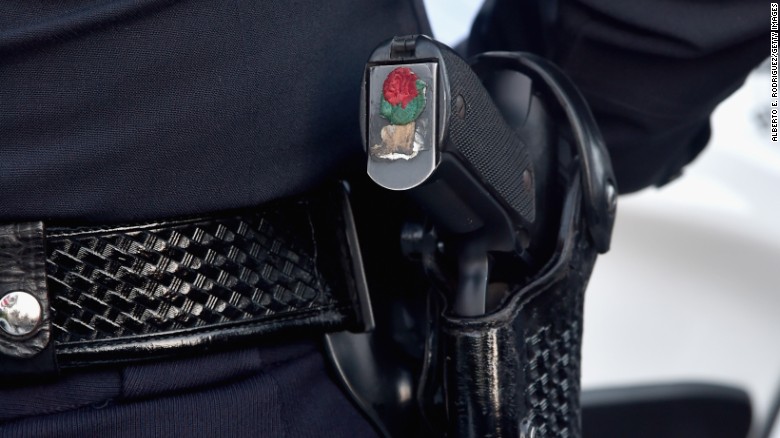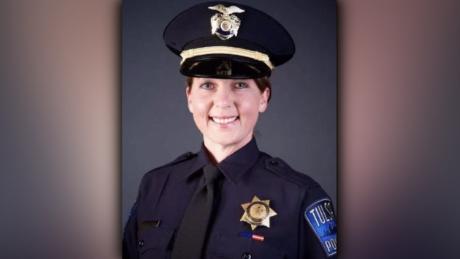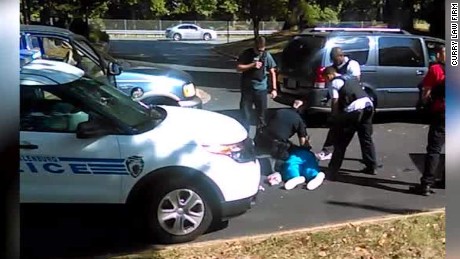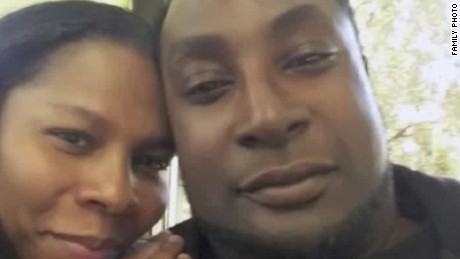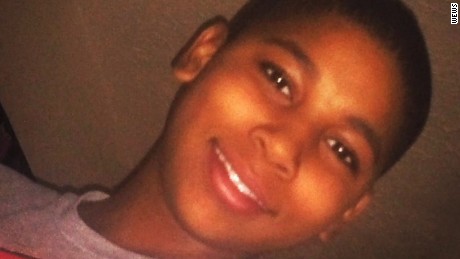Story highlights
- American police training emphasizes continuous fire until a potential threat is stopped
- Officers are trained to aim for a person's chest because it's most likely to take them down
(CNN)From Ferguson and North Charleston to Tulsa and Charlotte, fatal police shootings seem to be happening with alarming regularity.
Police officers sometimes must make split-second decisions, under pressure, about whether or not to fire their weapon. It's not an easy job. But some of those killed by police in recent years have been unarmed, sparking outrage in communities across the US and raising questions.
Why did the police have to kill these people? Are there other ways to defuse a potentially dangerous situation without someone getting fatally shot?
Such cries grew louder earlier this month after suspected New York and New Jersey bomber Ahmad Khan Rahami was wounded but captured alive during a shootout with police.
To gain a better understanding of police officers' use of deadly force from their perspective, CNN interviewed Cedric Alexander, a nationally recognized policing expert and veteran police chief who was called in to review the Ferguson, Missouri, police department after the 2014 fatal shooting of Michael Brown. Alexander is currently Chief of Police in suburban Atlanta's DeKalb County.
Here's a condensed version of our conversation.
Why don't police officers shoot to wound?
Officers are trained to "shoot to stop," which often results in a homicide, Alexander said. They aim for the center mass of a person's chest because it is the target they are most certain to hit and is most likely to take the suspect down.
Even a skilled marksman would have difficulty hitting a suspect's arm or leg in a fast-moving situation. And a wounded suspect could still possibly shoot the officer or someone else.
Why do officers fire so many shots?
Most officers today carry semi-automatic pistols instead of revolvers. Two decades ago, officers were trained to fire one or two rounds from their revolvers and then assess whether they needed to keep shooting.
But now officers are trained to assess the threat level while firing, which means the officer may pull the trigger multiple times before the suspect has fallen, Alexander said.
Why don't officers pause while shooting to reassess the threat?
An armed suspect may still be able to return fire if the officer pauses during shots, Alexander said. Because semi-automatic pistols carry many more rounds than six-shot revolvers, and magazines make for quick reloading, modern police doctrine stresses firing until law enforcement and the public are safe.
Why don't police use Tasers instead?
Legally, officers are only to fire when they feel their life, or someone else's life, is in danger. But different officers are going to perceive a threat differently. While all officers are encouraged to use non-lethal means to subdue a suspect if they deem it feasible, they may use deadly force if they believe they are in imminent threat of harm.
That might be a tough sell in the Tulsa case where the man who was shot had his hands in the air -- and the officer has been charged with manslaughter -- but an easier one in the Charlotte case, where the suspect appeared to be holding a gun and refusing to drop it, Alexander said. [The family disputes that he had a gun.]
Tasers have a reach of nearly 35 feet, which lets police use them to immobilize people within the same distance as many armed confrontations. But their effective and safe use requires "a great deal of training" that many departments don't provide, according to National Police Training, a training website for law enforcement.
There are also concerns that Tasers are occasionally misused or overused by officers, sometimes with fatal consequences, the website says.
(David Klinger, a nationally recognized policing expert at the University of Missouri at St. Louis, argues officers should only use a Taser if they believe it can prevent a situation from escalating to deadly force. Klinger also contends that Tasers should only be used in cases where a second officer can provide "lethal coverage" in case the Taser doesn't stop the suspect.)

